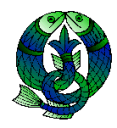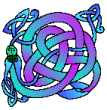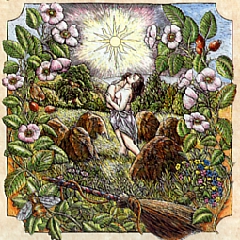The Druids
Page Index
 Druids
Druids  Myths about Druids Myths about Druids  Stonehenge, Amesbury, etc.: Stonehenge, Amesbury, etc.:  Deities of the Druidic Path Deities of the Druidic Path  Who Are the Druids Who Are the Druids 
 Druid Society Druid Society  Druid Magic Druid Magic  Sacred Animals Sacred Animals  Wheel Of The Year Wheel Of The Year 
 Triads and Circles Triads and Circles  Druids and Sacred Trees Druids and Sacred Trees 

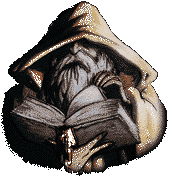
Druid Magic: The Practice of Celtic Wisdom

|
Perhaps the most mystical, magical people ever known were the Druids. They were wizards, storytellers, teachers and spiritual leaders. They were attuned to the Earth and the Sun. And they were very powerful.
DRUIDS
appeared about 600 to 400 BCE. Most archeologist and anthropologist believe that Druidism arose from the various forms of Shamanism native to the areas where the Celts lived. One set of legends claim that the Druids were from a place that is now under the sea. The "Mysteries" of the Druids is not fully known. They did not allow their "Mysteries" to be recorded. What little evidence of the Druids was left by the Roman invaders? What we do know is the Romans were in awe of the Druidic powers.
The Celtic Druids in Gaul believed their religion descended from Britain. So, Druidic students were sent to Britain to learn the Druidic doctrines. It appears that the Druids were very interested in magic and wanted to master it.
Druid magic dealt with mixing herbs together to make a politest and tea. They also sang chants to help crops to grow. It is recorded that Druids sang songs to the sun at sunrise to help with a good day. They also sang songs to assist a king in battle. They could turn land against sovereignty. They could call up great storms or pressing heat waves. They believed in the immortality of the soul, which at death was believed to pass into the body of a newborn child.
There are references in stories that tell of the sons and daughters being sent to other places to learn the arts. The most common reference is the country now known as Spain.
Ancient accounts claimed Druids performed the functions of priests, religious teachers, judges, and civil administrators, with supreme power being vested in an arch druid. Three classes of Druids existed: prophets, bards, and priests. They were assisted by female prophets or sorcerers, who were not given the powers and privileges of the Druids.
The Druids were well versed in astrology, magic, and the mysterious powers of plants and animals; they held the oak tree and the mistletoe in great reverence, and they usually conducted their rituals in oak forests. Archaeologists believe that the Druids probably used as altars and temples the stone monuments known as dolmens that are found throughout the areas where Druidism flourished. Here we find, Stonehenge in England antedates Druidism by many centuries.
The Druids led their people in resisting the Roman invasions, but their power was weakened by the rebelliousness of the Gallic warriors, who were envious of their political authority. The superior military strength of the Romans and the subsequent conversion of many followers of Druidism to Christianity eventually led to the disappearance of the religion the Druid followed and administered.
|
|
Dispelling the Myths about Druids
Ritual Killing:
Many historians believed that the ancient Druids performed human sacrifices. All of these references can be traced back to the writings of one individual, Julius Caesar. He may well have been prejudiced against the Celts because of their continual warfare with the Romans. In war, the enemy is routinely demonized. Some remains of executions have been found in the archeological record, but it is not obvious whether the victims were killed during religious rituals or to carry out the sentence of a court. There is one reference to human sacrifice in Celtic literature, but it appears to be a Christian forgery. The ancient Celts might have engaged in ritual killing; certainly other contemporary societies did. Modern Druids, of course, do not.
|
|
Stonehenge, Ave-bury, etc. :
Many people believe that the Druids constructed Stonehenge, the complex of standing stones in South Central England. Stonehenge I ("Old Stonehenge"), which was composed of the 56 "Aubrey" holes, was constructed circa 3500 BCE. The current formation was completed circa 1500 BCE. This was almost a millennium before the start of Celtic civilization. The Druids may have preceded the Celts in England. Thus, either the Druids or their fore-runners might have been responsible for the finishing of Stonehenge and other monuments. There is no historical proof that they were or were not involved. Even if they did not actually construct these monuments, they may well have performed rituals there, and understood its astronomical meanings and uses.
In Ireland and Great Britain, there are many ancient "Druid" altars, beds, rings, stones, stone circles and temples. However, radio-carbon analyses assign dates such as 1380 BCE (Wilsford Shaft) to 3330 BCE (Hembury). Again, ancient Druids may have used these megalithic monuments, but did not necessarily build them
Ireland now has countless wells and springs dedicated to the Christian Saint Bridget. She was obviously descended from the Celtic Goddess Brigid/Brigit. "Finding the cult of Brigit impossible to eradicate, the Catholic church rather unwisely canonized her as a saint, calling her Bridget or Bride." The sacred ownership of the various Pagan holy sites was simply translated from Goddess Brigid to St. Bridget after the area was Christianized.

Celtic God Samhain :< /FONT>
this non-existent God is often mentioned at Halloween time. He is supposed to be the Celtic God of the Dead. No such God existed. Samhain is, in reality, the name of a Druidic fire festival. It can be loosely translated as "end of the warm season".
Monotheistic Druids:
some writers have promoted the concept that Druids were basically monotheistic, following a sort of pre-Christian belief system. There is essentially no evidence of this. Druids worshipped a pantheon of Gods and Goddesses.
|
Deities of the Druidic Path
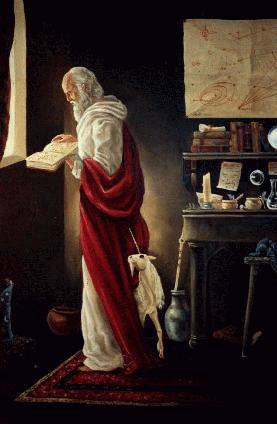
|
The Lord of Light - Lugh.
The God of Light and master of all skills equally. Lugh is considered the chief Lord of the Pantheon; he is the son of the Sun and father of Chullain. His special day, Lugnasadh (the first of August), is one of the four great festivals in the Irish calendar.\
The Lord of the Animals - Cernunnos.
The "Horned One" an archaic and powerful deity, widely worshipped as the "lord of wild things".
Lady of Bright Inspiration - Brighid.
Goddess of smith-craft and metal work, poetic inspiration and therapy.
The Flower Maiden - Blodeuwedd.
The Flower-Bride, formed of blossoms by the magicians Gwydion and Math.
The Young Son of Light - Mabon.
The God of liberation, harmony, unity and music. One of the most widely worshipped deities in the Druidic world, and is at the centre of Druidic magical cosmology.
The Hero - Cuchulainn.
The great Ulster hero, guardian of the Sacred Land.
The Lord of Thunder - Taranis.
God of the Wheel, one of the powerful Father Gods, Associated with forces of change.
Queen of Horses and Fruitfulness - Epona.
The Goddess of horses, which are sacred to her and is associated with sovereignty and ruler-ship.
Queen of Death, Sexuality and Conflict - The Morrigan.
The red-haired Goddess of battle and procreation who combines the threshold energies of life and death, sexuality and conflict in one Goddess.
The Sea God - Manannan mac Lir
The primal God of the ocean deeps, and a master of magic.
The Mighty One of Knowledge - The Daghdha.
The God of Wisdom, a primal father deity of tremendous power, and a God of abundance and fertility.
|
|
Who Are The Druids
If you asked a hundred people who they thought the Druid's were, you would be likely to get a hundred different answers. The Druid's believed in the transmigration of souls and at one time thought that clouds were made from the souls of people waiting to be reincarnated. As they had not yet reached perfection, they were not ready to unite with the sun. Souls who no longer needed earthly reincarnation were believed to live on the moon until it was time for them to evolve further. The sun was believed to be composed of pure souls, living in a state of complete bliss, but even this was not the ultimate. After being purified three times in the sun, the souls were able to progress even further and reach Paradise.
|
Druid Society

|
Long before the Romans invaded Normandy, Britain and Ireland, the Celts lived in communal, tribal groups, their lives entwined with the all-pervading presence of elemental forces, and of nature itself.
Among their number were an elite group of wise elders whose job it was to memorize in verse all of the knowledge and history of their tribe and pass the wisdom on by word of mouth. Often the keeping of this hidden knowledge was the traditional responsibility of certain clans or families. In this way, the family and societal histories were kept alive within the oral tradition.
These wise elders were known as the Druids, Ovates and Bards. Among their ranks were the educated leaders of the Celtic people... the historians, astronomers, philosophers, judges, royal advisors, doctors and musicians, shamans and diviners.
With their concentrated system of learning which was known in Ireland as the Brehon Law, they grew in power and stature until they were as or more powerful than the Kings and Queens they served. Celtic Bards and Druids were allowed to pass unhindered between different warring tribes even though they were, at a later time, formally prohibited from carrying arms or using any physical weapon. But such was their position that they were capable of using words alone to vanquish their enemies when the need arose.
The Druids had a very special relationship with nature. They saw that human life was but a small fragment of a much larger pattern, and that the shape of life rhythms could be worked out by the careful observation of, and the strict adherence to, an annual cycle.
The Druids used a complex system of time-keeping based on their awareness of solar and lunar cycles. According to the Coligny Calendar, they measured the passage of time by
observing the lunar orbit around the Earth (a lunar month.)
A Druid Cycle of five years was known as a 'Lustre'. At the end of six Lustres, or one month of years (30), a Druidic Cycle was complete. A period of 21 months of years corresponded to a Druidic Era. Eras dated from the Second Battle of Mag Tuireadh in Ireland, at which the Tuatha Danann vanquished the Fomorians.
Greek was originally known and used by the Ancient Druids until the arrival of Christianity when Latin was adopted as the new religious and scientific language. However the Druids also used a secretive hieratic alphabet as a special means of communicating with each other. It was known as the Ogham, or Beth-Luis-Nuin alphabet. It was limited to mnemonic learning by question and answer, and embodied special symbolic uses that are lost to us.
Classifications of Society
Within ancient Druidism, there were three specialties. "A general categorization of the three different grades accords the arts to the bards, the skills of prophecy and divination to the Ovates and philosophical, teaching, counseling and judicial tasks to the Druid."
The Bards
- were "the keepers of tradition, of the memory of the tribe - they were the custodians of the sacredness of the Word." In Ireland, they trained for 12 years learning grammar, hundreds of stories, poems, philosophy, the Ogham tree-alphabet.
The Ovates
- worked with the processes of death and regeneration. They were the native healers of the Celts. They specialized in divination, conversing with the ancestors, and prophesying the future.
The Druids and Druidess
- formed the professional class in Celtic society. They performed the functions of modern day priests, teachers, ambassadors, astronomers, genealogists, philosophers, musicians, theologians, scientists, poets and judges.
They underwent lengthy training: some sources say for more than 20 years.
Druids led all public rituals, which were normally held within fenced groves of sacred trees. In their role as priests, "they acted not as mediators between God and man, but as directors of ritual, as shamans guiding and containing the rites."
Most leaders mentioned in the surviving records were male. It is not known whether female Druids were considered equal to their male counterparts, or whether they were restricted to special responsibilities. References to women exercising religious power might have been deleted from the record by Christian monks during the Celtic Christian era.
|
DRUID MAGIC
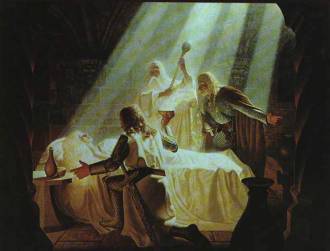
|
Druid magic is the result of a strong and healthy awareness of nature, and the spirits and gods who live in nature. A Druid must understand the language that Nature uses to speak its wisdom. All else follows from that, Druid magic has a votive quality; magic is performed by appealing to the gods to perform a service in return for an offering. Mythic Druids often used trance-ecstasy to achieve their purpose as well. But in the myths very little attention is paid to summoning or controlling spirits and gods, instead, the Druids sought communication and communion.
* Aisling
- A dream or a vision (from the sky) Possibly, Aisling refers to altered states of consciousness.
* Immram
- A journey to the realms where the Gods live, possibly by
shaman flight. Literally, Immram
means "sea journey", for it is in the western ocean that the islands
of otherworldly paradises were located.
* Imbas
-Inspiration, poetic frenzy, the "fire in the head" that Amergin
speaks of. Possibly, Imbas refers to altered states of
consciousness.
* Echtra
-"Adventure", expeditions and journeys on holy ground.
This way of magic often happens "accidentally" to heroes,
warriors, and hunters.
* Dra/iocht
-The word for magic. Literally translated, it means "what
Druids do".
* Fi/rinne
-"Truth", or "Justice". The binding force of nature, the way
of nature, Note the significance of Truth and Justice being in the same word.
|
SACRED ANIMALS
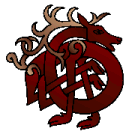
|
Horses
- Several deities have attributes or connections with horses, including the Irish Macha (after whom the fortress Emain Macha is named) the Welsh, Rhiannon, and the Gaulish Epona. In fact, the horse goddesses Macha and Rhiannon were married to mortal kings, so perhaps they were Goddess to whom the Sacred King (see Classes) were married. Horses are an earth animal, and a symbol of sovereignty.
Salmon
- appear fairly frequently in Fianna myth, and usually represent Wisdom. Fionn MacCumhall gained supernatural wisdom when he accidentally burned his thumb on a magical salmon cooking on a spit, for example.
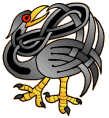
|
Crows
- were sacred to the Goddess Morrigan, and typically appeared in the myths to foreshadow battle or death. They are not necessarily birds of bad omen, however; they can indicate simply that otherworldly beings are present at the time of death, for better or worse. A crow landed on Cu Chullain's shoulder as he was dying, for example.
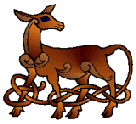
|
Deer
- were a hunting animal, and probably represented the honor that the hunters and warriors were obliged to maintain. Appearances of deer sometimes indicate the presence of an entrance into the Otherworld.
Boars
- were also a hunting animal, but a far more dangerous prey than deer. Boars probably stood for war and death, but also heroic skill because of the effort needed to kill one. The ritual of the Champion's Portion required a Boar for a feast.
Serpents
- As we have seen before, the Gaulish Druids used a special "druid egg" supposedly made from the spittle of serpents. When Saint Padraig banished the serpents from Ireland, perhaps this is a metaphor for the banishing of the Druids. T he Serpent in myths appears to represent the earth powers.
Cattle
- were the primary economic unit of the Iron-Age Celtic people. The larger your herd, the more influential and powerful you could be among the nobility. Cattle therefore represent temporal or political power. Cattle also represent bounty and fertility; indeed the river Boine is said to spring from the udder of a mythic cow owned by the river goddess Boann.
|
Wheel of the Year
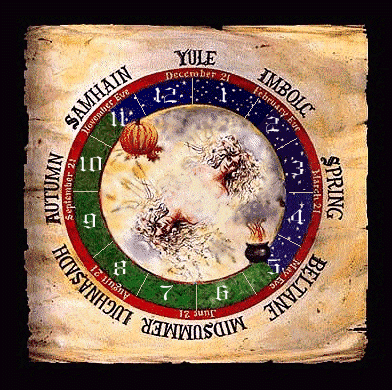
|

|
Samhain
Samhaine marks the first day of the Celtic New Year, which actually began at sunset on October 31st. It is the most important festival of the year, marking the end of one pastoral year and the start of the next. At Samhaine the gates to the other worlds opened and the inhabitants could cross over and avenge misdeeds that had been done to them.
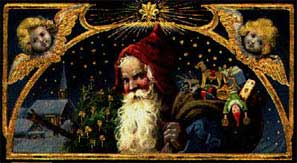
|
Alban Arthuan (Yule)
This is the Winter Solstice, marking the shortest day of the year. It marks the death of the old sun and the birth of the dark half of the year.

|
Imbolc
The Fire Festival to celebrate the sun gaining strength again. Even though it is still winter, Imbolc commemorates the very first sign of spring and portends new beginnings. This festival was sacred to the fertility goddess, known as Brigit. In tradition a single candle is kept burning all day in every house.

|
Spring Equinox
Marks the 1st day of true spring. The Goddess blankets the Earth with fertility, bursting forth from her sleep, as the God stretches and grows to maturity. He walks the greening fields and delights in the abundance of Nature. This is a time of beginnings, of action, of planting spells for future gains, and of tending ritual gardens. Eggs are colored and placed on the altar as magical talismans. The familiar Easter Bunny is a Pagan derivative, as are baskets of flowers. The colors light green, lemon yellow and pale pink are traditional for this holiday. -Foods-hard boiled eggs, honey cakes and the 1st fruits of the season.
Beltane
Beltaine is named after Bel, the god who represents the sun. It is an annual fertility festival to welcome the start of summer and the light half of the year.
Alban Heruin
The summer solstice marking the midsummer. The sun is at its highest now, and the oak tree is at its peak. Consequently, Druid's celebrate an Oak Festival on this day.
Lugnasadh
This is the harvest festival to celebrate the marriage of Lugh and Eire, Mother Earth. It marks the first day of autumn. It is a festival to ensure the ripening of the crops rather than to give thanks for a good harvest.
Alban Elued
This is the autumn equinox, when day and night are equal in length. It is the Festival of the Vine, a night of feasting and drinking, and marked the end of harvest time.
|
Triads and Circles
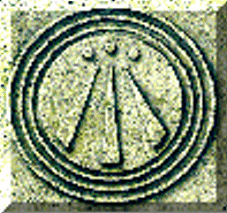
|
Triads
Many of the teachings of the druids are grouped into triads, partly as an aid to memory, but also to summarize and preserve their truths. Unfortunately, only part of the oldest triads survive.
Circles
The three Circles of Existence showing the basis of creation. The innermost circle is Abred, the place where the inner and outer worlds meet. The middle circle, Gwynedd, is the realm of Blessedness and Purity. Life here is good and pure. The outer circle, Ceugant, is the realm of Infinities. It spreads out into infinity, but ultimately circles back into Abred.
The Other World's
In addition to the world we live in, there are two other worlds coexisting at the same time. The Otherworld and the Underworld, All the worlds were divided into fifths: north, south, east, west and center. The center overlapped the other sections and was home to the places where it was possible to move from one world to another.
The Eightfold Year
The year was divided into two halves, light and dark, warm and cold. Samhain marked the start of the dark half of the year. Belaine was the start of the light half of the year, and was the second most important festival after Samhaine. Between Samhain and Belaine were Imbolc and Lugnasadh, creating four quarters. These four were all Fire Festivals that were celebrated over a period of three days, before, during and after the event. Then the Fire Festivals were in turn divided by the solstices and equinoxes, creating the eight fold year.
|
Druids and Sacred Trees
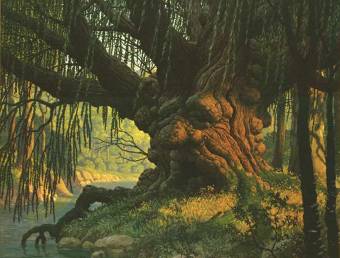
|
Whether the word druid means "the oak's men", in assonance with drus and for the ritual of the picking of the mistletoe, or "the great wises" - dru-uid-es -, as in connection with the Indian Brahmins, with no doubt the druidic tradition is of much interest.
But its history isn't of easy digging due to the lack of written direct sources and to the fact that most of their myths, habits, information of any kind came to us through their enemies. The druidic world soon evokes a life in full connection with the surrounding nature, and a deep knowledge of it as plants and trees were used in all kind of rituals, were used as a form of language, and were used as astrologic symbolism. In few words plants and trees were the basement of Celt-druidic religious, ritual, magical and social life.
Caesar's De Bello Gallico gives us some information about who the druids were. They were part of the priest class, together with the bards (or filid - the Irish version) and with the diviner (this last category sometimes is associated with the druids in just one class). The druids held role of philosophers, judges, mages, teachers, they held sacrifices and - if we consider the diviners among druids - also diviners and mystical's. The druids, especially in Ireland, were even doctors and held the secrets of the medicinal herbs and plants. Their knowledge was handed down orally as they believed that writing down is to weaken the power of edidic memory and to dishonor the thing written down.
The plants and trees held a fundamental role in the druidic rituals and life, as each tree or plant was connected to special powers or characteristics, with special healing properties. In fact the tree was the primary symbolic reference within the druidic tradition.
The trees were bridges between the realms of Land and Sky, they communicate Water between those realms, and a tree could symbolize also the three realms united in harmony, and as it happened on a riverbank, on a seashore etc. there would be a great sacred place for poetic inspiration and spell casting.
The roots and the branches
of a tree would symbolize a relationship between the Sky and the Underworld, the seasonal cycle would symbolize the cycle of birth, death, rebirth (the druids believed in reincarnation). The trees (and the plants) are also the basis of the "secret" druidic language: the Ogham.
The ancient Celtic Oghams (letters of the Ogham alphabet)
were each associated with a tree or a plant. The markings on a stick or branch appear as horizontal carvings and slashes across a vertical baseline and the way to read them is top-to-bottom. Actually there are no evidence of the use of the Oghams as divination tools, as the archeological findings show them always as landmarks or as burial monuments.
In their magic and divination rituals they would use Hazel sticks, according to the fairies book. The stick should be cut off in a new-moon night, choosing a blooming branch, in order to keep the life and power carried by the young blooming branch.
The Hazel-tree
was considered the place of wisdom, and it was associated to the Sacred Salmon. The legend says that the Salmon ate nine nuts of poetic wisdom swimming under the overhanging Hazel trees. Hazel twigs were also used for divination because of their pliancy and affinity with water. Moreover, the Hazel wood was used in nightly rituals to give fertility to women who lost it or who never had it.
The Willow held also a very important role within the druidic world. Another water-loving tree, it is related to the gift of prophecy and it was supposedly used by druids in associations with the ritual of the wearing of animal's skins to reach a deeper contact with the nature and its powers.
The Walnut-tree was respected and feared among Celts because of its tight connection with prophecies and the belief that it was dangerous to fall asleep under its shadow. The druids would use the leaves to make potions and infusions to arrange fascinations and witchcrafts.
The Oak - king of the forest
- had a special role among all other plants. The Carnuti forest is made of Oaks, and there the druids gathered once a year - an all nations meeting -, and close or under an Oak the druids would teach their lessons. Its wood burns slowly so it guarantees a long-lasting fire. Its Celtic name is "Duir" which means doorway, and the Oak symbolized a doorway to mysteries and strength. Moreover, the Oak was the supporting tree for the Mistletoe, probably the most sacred plant within the druidic tradition.
Mistletoe was held in great reverence by the Druids. They went forth clad in white robes to search for the sacred plant, and when it was discovered, one of the Druids ascended the tree and gathered it with great ceremony, separating it from the Oak with a purified knife. The Mistletoe was supposed to be cut only at a particular age of the moon, normally in the beginning of the year, and it would be seek by the druids only when they had visions that would lead them to the sacred plant. When no visions would occur for a long time, or the Mistletoe would fall to the ground that would be considered as a very bad omen bound to bring misfortune on the nation. The Mistletoe was considered to be a strong protection against all kind of evil.
There is another tree which held a very important role for its symbolic and religious aspects: the Yew.
The Yew is connected with the death and the birth, it stands between this world and the Other world. From its wood the Celts made spears and shields. The wheel of the druid Mog-Ruith - hypostasis of Dagda, a God with many skills and among them the power over the elements -, doctor and warrior (Fianna), was made out of Yew. The druid's name Mog-Ruith means "servant of the wheel" and according to F. Le Roux he held the cosmic wheel that blinds who looks at it and deafen who hears it. It is believed that over Yew's woods the Irish "filid" would carve their charms. The name "Eoclaid", which is a typical royal name, means "he who fights with the Yew".
|














